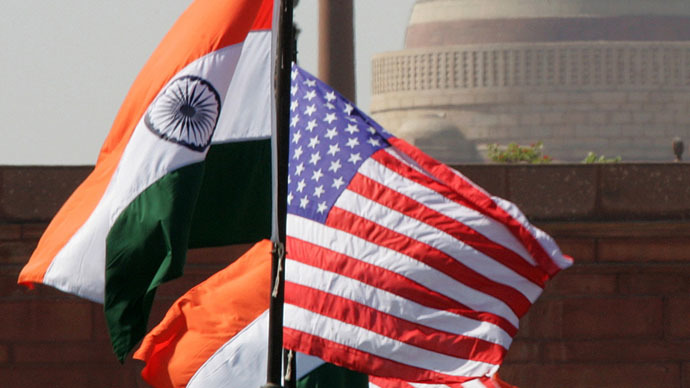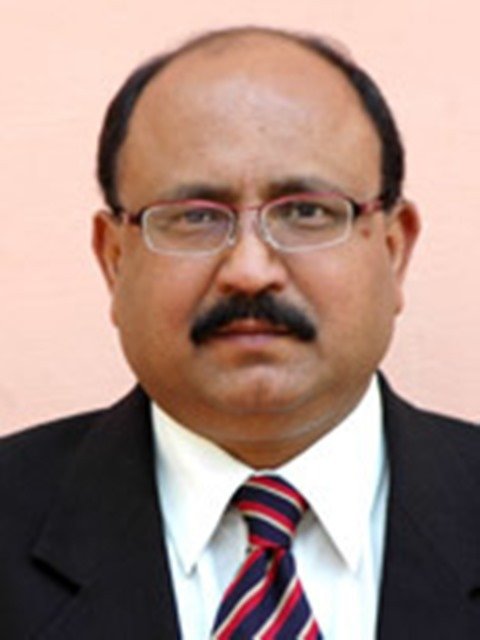Russia need not worry as India-US ties poised for higher trajectory

India is getting spoilt for choice and faces a problem of plenty, as major world powers woo the new Indian government led by Prime Minister Narendra Modi; but Russia need not worry.
The United States is trying its best to build bridges with the Narendra Modi government at a time when the West is staring down at a Cold War 2.0 scenario with Russia. America and European countries have slapped sanctions on various Russian companies for Moscow’s alleged role in the Ukrainian crisis and Russia has matched the fast and furious retaliation by banning all food imports from the West.
While the Modi government is just about 75-days old, many momentous changes are likely to take place. More importantly, that time is going to start now.
The big picture that is likely to emerge so far is that India will move very cautiously and consciously in managing its ties with the foreign policy tripod: (1) the US-led developed world (which will include Asian powers like Japan and South Korea), (ii) Russia and (iii) China. My considered opinion of how India will engage with these three important power poles is summed up as below:
1. There may be a subtle, unstated policy shift of sourcing India’s defense equipment requirements from Western powers like the US and France as well as Israel, the three countries which are formidable rivals to Russia in this sector. This means that Russian defense exports to India may continue to go down while the three other countries mentioned may scale up their defense cooperation with India, particularly the sale of sophisticated weaponry. This won’t be to spite Russia, but to reduce over dependence on Russian weapons. The Indian dependency on Russian weapons has been steadily declining and has now come down to about 60 per cent, meaning 60 per cent of weapons in the Indian arsenal are of Russian origin.
2. The idea is to focus on cutting edge technology which the West is now readily offering along with the co-development and co-production baits, which used to be Russia’s USP and monopoly but no more.
3. While Indian defense deals may dry up for Russia, a far bigger and monetarily much more huge economic engagement is waiting to play out between India and Russia in the field of energy. This is going to be in two crucial sectors: nuclear and oil and gas. India and Russia are holding serious discussions on a $40 billion pipeline from Russia to India which will initially supply gas and later on oil too. This will be the mother of all Indo-Russian bilateral cooperation projects.
US-India
US Defense Secretary Chuck Hagel has concluded an official visit to India where he met his Indian counterpart Arun Jaitley, Foreign Minister Sushma Swaraj and Prime Minister Narendra Modi. Hagel’s trip has come just about a week after two US secretaries, Secretary of State John Kerry and Secretary of Commerce Penny Pritzker visited India.
Hagel also met top executives of Indian defense companies like Bharat Forge, L&T, Mahindra Group, Tata Sons, Reliance Industries, Pipavav and American defense companies in India like Honeywell, Raytheon, and Textron.
The three US Secretaries’ India visits should be seen as preparatory to the climactic event of a summit meeting between Modi and President Barack Obama in Washington, likely to be held on September 30.
This upsurge in India-US contact at the highest political level denotes fast-changing diplomatic and strategic matrix involving the new government in India – and Russia is intrinsic in this diplomatic game as the West woos India, while India and China are making slow but steady progress in intensifying their bilateral cooperation.
While on his way to India, Hagel told journalists accompanying him that India should be given time and space to define the nature of its relationship with the US. “It has been an independent non-aligned nation since it became a democracy. We respect that. We take note of that. The people of India, like the people of any nation, deserve their decision-making space, and how they want not only their country to be perceived, but what foreign arrangements they want to make based on their terms… I do think that there is always an issue when the greatest power on earth, the United States, develops relationships with countries. No country wants to be seen as a second cousin to the US or any country. And that’s as it should be. So that’s not an issue,” Hagel said.
During talks with his Indian interlocutors, Hagel pushed for defense deals worth more than $7 billion, including the stalled mega deals for M-777 ultra-light howitzers and Javelin anti-tank guided missiles (ATGMs). The US bagged Indian defense deals worth $10 billion in the last decade and edged past Russia as India’s number one defense supplier. But now the Americans are getting more ambitious and widening their defense export basket by including helicopters and UAV’s (unmanned aerial vehicles).
However, it must be clarified that no defense deals are meant to be signed during Hagel’s visit and all this will be left to Modi’s summit with Obama next month as the two sides want the meeting to be substantive.
India and the US are already very close to signing the $2.5 billion deals for 22 Apache attack and 15 Chinook heavy-lift helicopters. The other defense deal India and the US are likely to sign in the coming weeks is for 145 ultra-light M-777 howitzers (worth $885 million). These howitzers are meant to be deployed by India’s new mountain strike corps which will essentially be China-centric.
The statements, views and opinions expressed in this column are solely those of the author and do not necessarily represent those of RT.
The statements, views and opinions expressed in this column are solely those of the author and do not necessarily represent those of RT.













